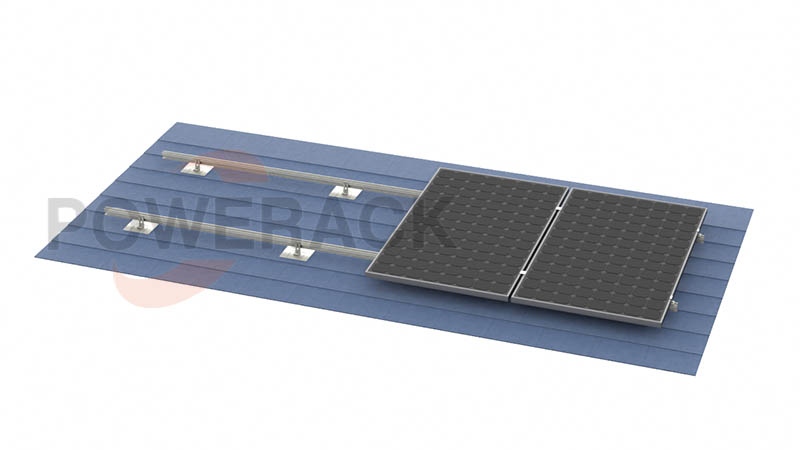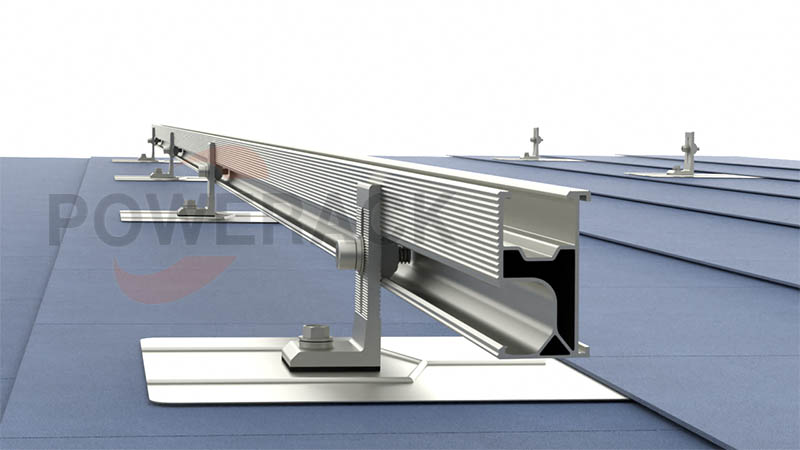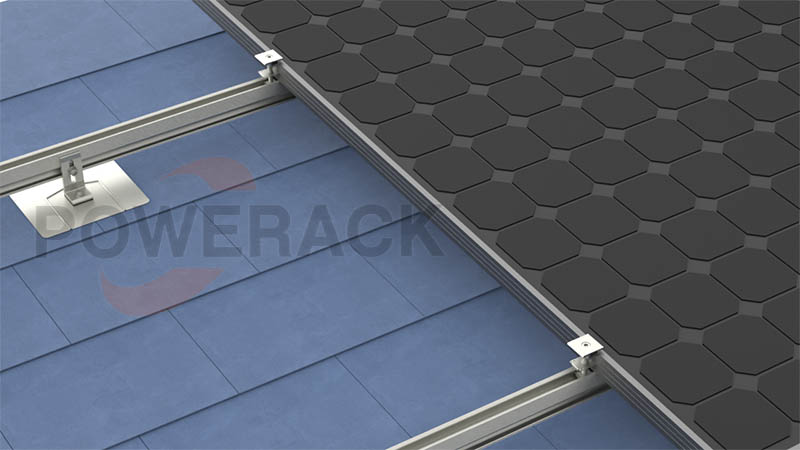
Solar installations on asphalt shingle roofs typically use aluminum photovoltaic mounts, which are structurally strong and reliable to withstand atmospheric erosion, wind loads, and other external effects.

During installation, the L-leg base is screwed to the roof and waterproofed with a waterproofing washer and waterproofing adhesive to ensure that the waterproofing of the roof is not damaged.

The bracket design usually includes accessories such as aluminum alloy guide rails, middle clamp, end clamp, etc. These accessories can flexibly adjust the position and angle of the PV modules to adapt to different roof structures and environmental conditions. The bracket material is usually corrosion-resistant aluminum alloy with an anodized surface to improve durability and aesthetics.
During the installation process, the importance of waterproofing measures was particularly emphasized. For example, asphalt-based adhesive materials need to be used to strengthen bonding at the eaves and flooding areas to ensure waterproofing. Waterproofing membranes are then laid around the perimeter of the roof and in the flashing areas to enhance the overall waterproofing performance.
However, cold and windy weather should be avoided during installation to prevent the self-adhesive adhesive from not sticking or being contaminated, which will affect the installation quality. And you need to pay special attention to the module edge overlap and side lap processing, especially in the ridge of the installation.
Asphalt shingle roof solar mounting systems offer the advantages of easy installation, durability and safety, and competitive pricing without damaging the shingles and ensuring an aesthetically pleasing roof. The use of specialized steel nails and ensuring effective adhesion of the shingle adhesive strips are key to preventing shingles from being blown off by the wind.